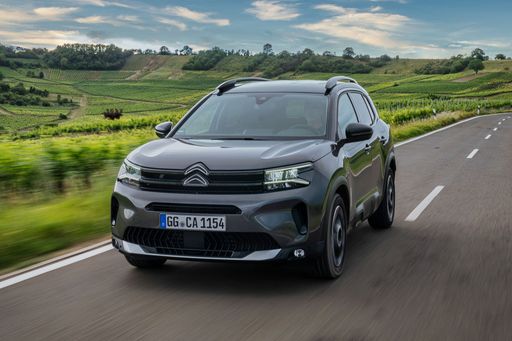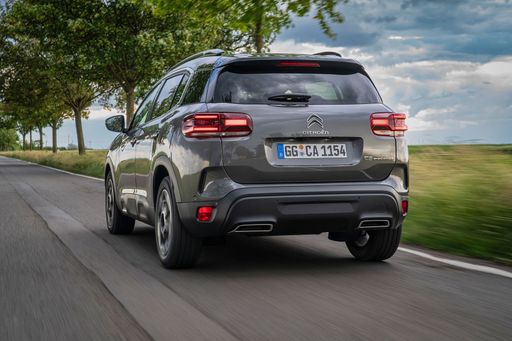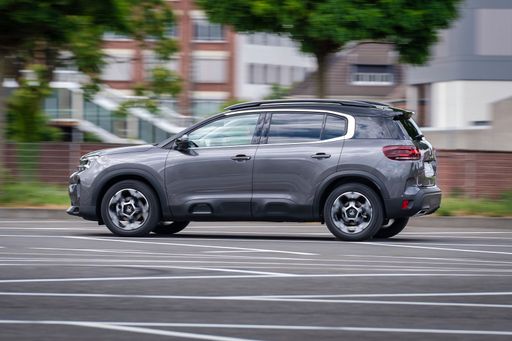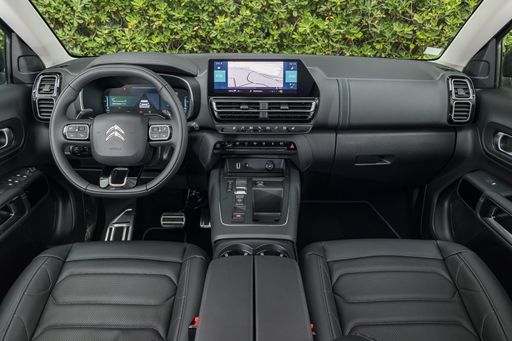Citroen C5 Aircross VS Nissan Interstar – Specs, Efficiency & Price Comparison
Which model is the better choice – the Citroen C5 Aircross or the Nissan Interstar? We compare performance (224 HP vs 170 HP), boot capacity (580 L vs ), efficiency (1.40 L vs 7.40 L), and of course, the price (29200 £ vs 34900 £).
Find out now which car fits your needs better!
The Citroen C5 Aircross (SUV) is powered by a Diesel, Plugin Hybrid or Petrol MHEV engine and comes with a Automatic transmission. In comparison, the Nissan Interstar (Cargo Van) features a Diesel or Electric engine and a Manuel or Automatic gearbox.
When it comes to boot capacity, the Citroen C5 Aircross offers 580 L, while the Nissan Interstar provides – depending on what matters most to you. If you’re looking for more power, you’ll need to decide whether the 224 HP of the Citroen C5 Aircross or the 170 HP of the Nissan Interstar suits your needs better.
There are also differences in efficiency: 1.40 L vs 7.40 L. In terms of price, the Citroen C5 Aircross starts at 29200 £, while the Nissan Interstar is available from 34900 £.
Compare all the key specs now and find out which model fits your lifestyle best!
Citroen C5 Aircross
The Citroen C5 Aircross stands out in the SUV market with its distinctively bold design and emphasis on comfort. Its interior is thoughtfully crafted, providing spaciousness and a plethora of features that cater to passenger convenience and enjoyment. With its smooth ride and refined driving dynamics, it offers a relaxing experience for both city commutes and long-distance journeys.
details @ media.stellantis.com
@ media.stellantis.com
 @ media.stellantis.com
@ media.stellantis.com
 @ media.stellantis.com
@ media.stellantis.com
 @ media.stellantis.com
@ media.stellantis.com
Nissan Interstar
The Nissan Interstar is a versatile van that expertly combines practicality with modern design. It offers a spacious interior that caters to both cargo and passenger needs, making it ideal for businesses and families alike. With its robust performance and efficient fuel consumption, the Interstar stands out as a reliable choice in the commercial vehicle market.
details

|
|
|
|
|
Costs and Consumption |
|
|---|---|
|
Price
29200 - 42400 £
|
Price
34900 - 55600 £
|
|
Consumption L/100km
1.4 - 5.7 L
|
Consumption L/100km
7.4 - 7.5 L
|
|
Consumption kWh/100km
-
|
Consumption kWh/100km
-
|
|
Electric Range
58 km
|
Electric Range
175 - 410 km
|
|
Battery Capacity
12.90 kWh
|
Battery Capacity
-
|
|
co2
32 - 144 g/km
|
co2
0 - 195 g/km
|
|
Fuel tank capacity
43 - 52 L
|
Fuel tank capacity
80 L
|
Dimensions and Body |
|
|---|---|
|
Body Type
SUV
|
Body Type
Cargo Van
|
|
Seats
5
|
Seats
3 - 7
|
|
Doors
5
|
Doors
4
|
|
Curb weight
1567 - 1845 kg
|
Curb weight
2053 - 2535 kg
|
|
Trunk capacity
460 - 580 L
|
Trunk capacity
-
|
|
Length
4500 mm
|
Length
5680 - 6315 mm
|
|
Width
1859 mm
|
Width
2080 mm
|
|
Height
1688 mm
|
Height
2498 - 2756 mm
|
|
Payload
444 - 465 kg
|
Payload
965 - 1447 kg
|
Engine and Performance |
|
|---|---|
|
Engine Type
Diesel, Plugin Hybrid, Petrol MHEV
|
Engine Type
Diesel, Electric
|
|
Transmission
Automatic
|
Transmission
Manuel, Automatic
|
|
Transmission Detail
Automatikgetriebe, Automat. Schaltgetriebe (Doppelkupplung)
|
Transmission Detail
Schaltgetriebe, Automatikgetriebe
|
|
Drive Type
Front-Wheel Drive
|
Drive Type
Front-Wheel Drive
|
|
Power HP
131 - 224 HP
|
Power HP
105 - 170 HP
|
|
Acceleration 0-100km/h
8.9 - 10.6 s
|
Acceleration 0-100km/h
-
|
|
Max Speed
189 - 225 km/h
|
Max Speed
115 - 177 km/h
|
|
Torque
230 - 360 Nm
|
Torque
300 - 380 Nm
|
|
Number of Cylinders
3 - 4
|
Number of Cylinders
4
|
|
Power kW
96 - 165 kW
|
Power kW
77 - 125 kW
|
|
Engine capacity
1199 - 1598 cm3
|
Engine capacity
1997 cm3
|
General |
|
|---|---|
|
Model Year
2024 - 2025
|
Model Year
2024 - 2025
|
|
CO2 Efficiency Class
E, B, D
|
CO2 Efficiency Class
G, A
|
|
Brand
Citroen
|
Brand
Nissan
|
Citroen C5 Aircross
Redefining Comfort: The Citroën C5 Aircross
Citroën has long been synonymous with comfort and innovation, and the C5 Aircross is no exception. Positioned as a premium SUV, it brings a seamless blend of style and technology. In this article, we'll explore the technical specifics and standout innovations that make the C5 Aircross a compelling choice in its segment.
Dynamic Powertrain Options
With the C5 Aircross, Citroën offers an impressive array of engine choices to suit varying preferences. The range includes efficient diesel models, petrol mild hybrids, and advanced plug-in hybrid variants. The plug-in hybrid model stands out with a combined power output of 224 PS, a remarkable fuel consumption rate of 1.4 L/100 km, and an electric range of 58 km, further enhancing fuel efficiency and reducing carbon footprint.
Advanced Transmission and Drivetrain
The C5 Aircross is engineered for smooth driving experiences with its automatic transmission options. Customers can choose between conventional automatic and a sophisticated dual-clutch transmission system. The front-wheel-drive configuration ensures optimal handling, making urban traffic and country roads a breeze, supported by a robust output ranging from 96 to 165 kW.
Interior Excellence: Space and Technology
Designed with a focus on comfort, the C5 Aircross offers a spacious interior that accommodates five passengers with ease. With a boot capacity ranging from 460 to 580 litres, practicality is guaranteed for family adventures. Additionally, the vehicle boasts top-tier technology, including advanced infotainment systems and modern safety features, ensuring an enjoyable and secure journey.
Eco-Friendly Performance
Citroën remains committed to environmental responsibility, reflected in the C5 Aircross' CO2 efficiency. The plug-in hybrid models demonstrate superior eco-friendliness with emissions as low as 32 g/km. The integration of a 12.9 kWh battery underlines Citroën's dedication to reducing environmental impact while maintaining performance standards.
Competitive Cost Metrics
Despite its premium positioning, the C5 Aircross remains accessible with a price range from €33,270 to €48,660, catering to various budgets without compromising on quality. Furthermore, the monthly costs remain competitive, making this SUV an attractive proposition for both personal and commercial use.
A Conclusion in Comfort and Innovation
Ultimately, the Citroën C5 Aircross excels by marrying innovative technologies with classic French comfort. As it strides into 2024, this SUV continues to embody Citroën's legacy, proving to be a standout choice in its segment for those seeking a unique blend of efficiency, style, and practicality.
Nissan Interstar
The Evolution of the Nissan Interstar
The Nissan Interstar has long been a staple in the commercial vehicle sector, known for its robust build and practical design. The latest iterations have further cemented its status with a range of technical enhancements and innovative features aimed at aiding businesses in achieving optimal efficiency. Whether you're navigating city streets or traversing the highways, the Interstar stands out as a reliable workhorse ready to meet various transport needs.
Power and Performance
The current range of Nissan Interstar models boasts diesel engines ranging from 105 to 180 PS, offering a commendable blend of power and fuel efficiency across the board. With a fuel consumption of between 7.4 and 7.5 litres per 100 kilometres, these vehicles are designed to minimise operational costs while maximizing performance.
All models feature four-cylinder engines, with engine displacement between 1997 and 2299 cm³, capable of producing torque figures between 330 and 400 Nm. These specifications ensure that the Interstar offers superior pulling power, which is particularly useful for transporting heavy loads across different terrains.
Transmission and Drive Options
Versatility is at the heart of the Nissan Interstar, with transmission options including both manual and automatic gearboxes. Drivers can also choose between front-wheel and rear-wheel drive configurations, allowing the vehicle to suit specific logistical requirements or personal preferences.
For those seeking simplicity and ease of use in urban environments, the Interstar with its automated gearshift provides a smooth driving experience, reducing driver fatigue and increasing focus on the road ahead.
Dimensions and Load Capacities
The Nissan Interstar is available in various lengths, from 5048 mm to an extensive 6848 mm, catering to diverse commercial needs. With widths ranging from 2070 mm to 2222 mm and heights from 2307 mm to 2808 mm, the Interstar offers multiple configurations to maximise cargo space and accommodate various loads.
With a maximum payload capacity of up to 1451 kg, businesses can rest assured that the Interstar is more than capable of delivering goods efficiently without compromising on safety or comfort.
Innovation and Technological Features
While functionality remains a priority, Nissan has not skimped on technological advancements. Among the innovations included are advanced safety features, such as anti-lock braking systems (ABS), electronic stability control (ESC), and a variety of sensors to assist with parking and reversing.
In terms of driver comfort, the brand offers multiple trim levels with exceptional interior features designed to enhance driver experience during long hauls. Options such as climate control, advanced navigation systems, and modern infotainment setups are available, ensuring that both driver and passenger remain comfortable and connected, regardless of the journey length.
Coachwork and Trim Options
The Interstar line-up provides a range of trim levels and equipment lines, from the entry-level Visia to the high-spec Tekna, catering to different market demands and individual preferences. The selection allows buyers to prioritise features that best suit their operation or driving style.
For example, the N-CONNECTA variant offers an array of added extras, enhancing both connectivity and comfort for drivers who rely on the vehicle as a mobile office.
Conclusion
The Nissan Interstar represents a harmonious blend of power, efficiency, and technological innovation in the large van segment. With its vast array of options and features, the Interstar is undeniably a top choice for businesses looking to invest in a dependable and adaptable commercial vehicle. As the line-up continues to evolve, the Interstar remains poised to meet the growing challenges and demands of the modern logistic landscape.
The prices and data displayed are estimates based on German list prices and may vary by country. This information is not legally binding.
